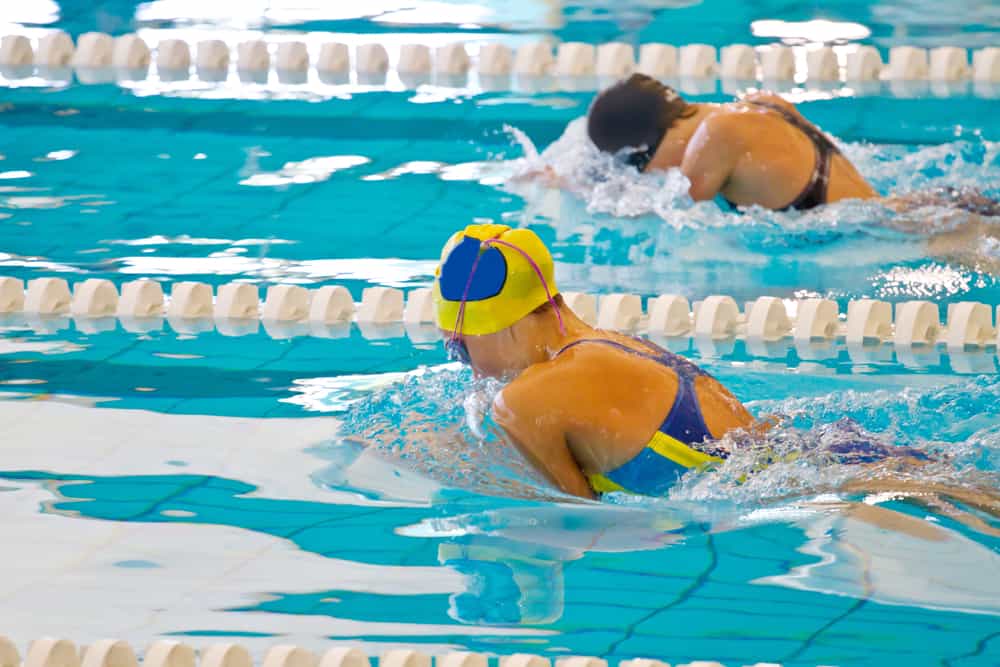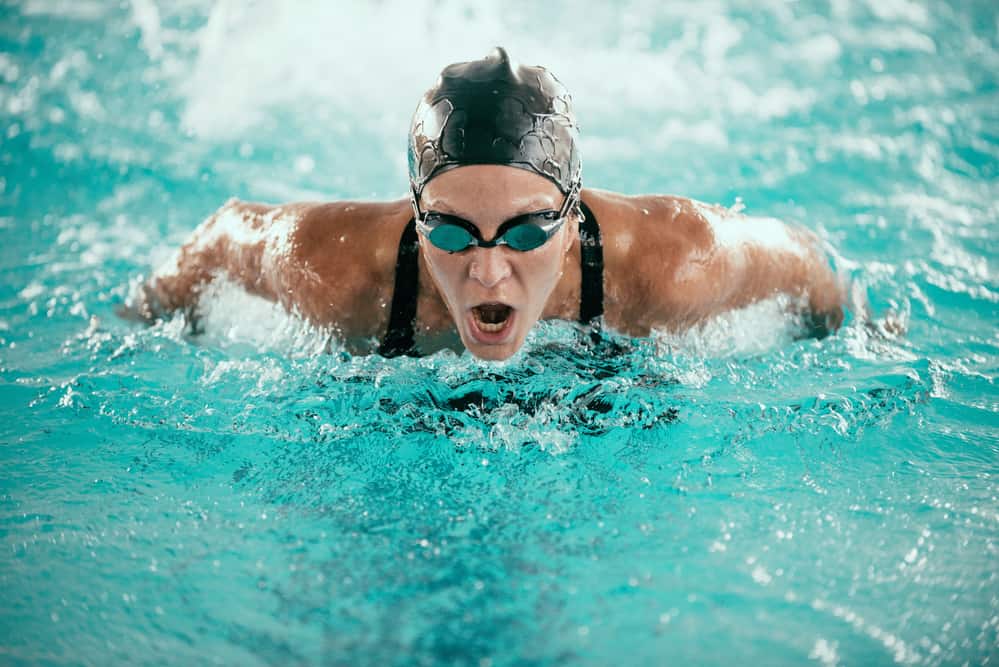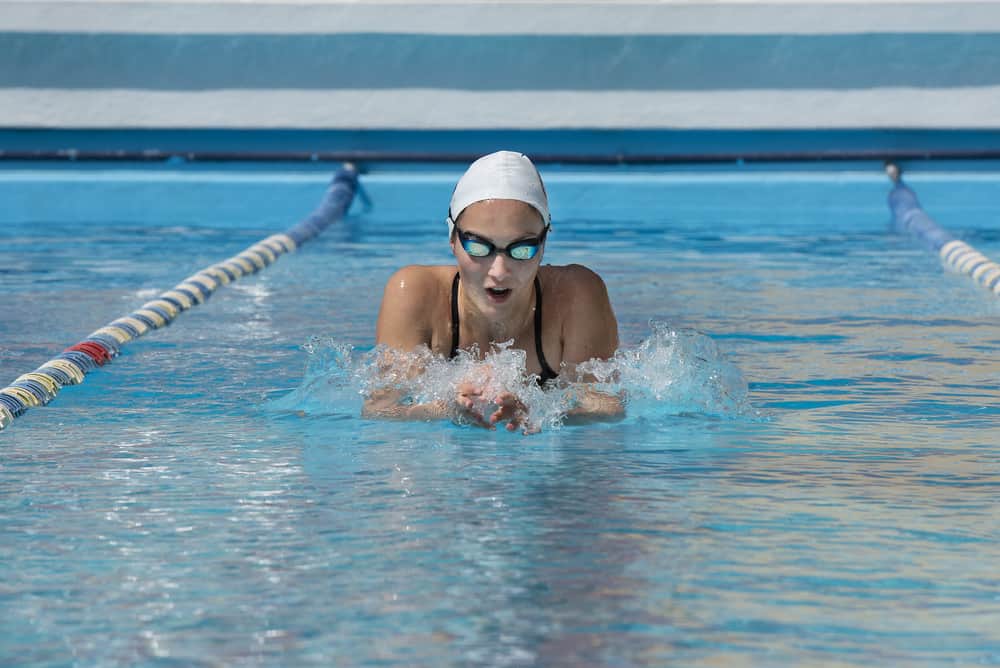The pectoralis major is a large muscle in the chest responsible for drawing the arm across the body. The latissimus dorsi is a large back muscle that helps pull the arm down. The deltoid is a muscle in the shoulder that helps lift the arm. The biceps brachii and triceps brachii are muscles in the arm that help extend and flex the elbow.
All of these muscles are used when swimming breaststroke. In addition, the gluteus maximus and quadriceps are also crucial for kicking in breaststroke. Strengthening these muscles can improve your speed and power in the stroke.

But it’s not just about muscle strength – proper technique is key to swimming efficiently and effectively. Working with a coach or taking a class can help improve your technique, leading to better performance in the water. So make sure to include both muscle-strengthening exercises and proper formwork in your training routine to improve your breaststroke technique.
Table of Contents
The Muscles Worked In Breaststroke
Breaststroke requires the utilization of the pectoral, latissimus, deltoid, biceps, and triceps muscles. These muscles work together to help you propel yourself through the water. The pectoralis major is the muscle in your chest that enables you to push off the wall and move through the water.

The latissimus dorsi is a large muscle in your back that helps you extend your arms and pull yourself through the water. The deltoid is a muscle in your shoulder that enables you to raise your arm out of the water. The biceps brachii is a group of muscles in your upper arm that you can use to lift your arm out of the water and into a curl.
The triceps brachii is a muscle in your upper arm that helps you extend your arm and push yourself through the water. Working these muscles in breaststroke can help improve your strength and endurance in the water. So next time you hit the pool, try incorporating breaststroke into your routine to work on these essential muscles.
How to Work the Muscles Used in Breaststroke
Swimming is a great way to get in shape and work your muscles. Breaststroke is a swimming stroke that is relatively easy to learn and works various muscles. This swimming stroke uses the pectoralis major, latissimus dorsi, deltoid, biceps, and triceps. You can perform these muscles using weights, cardio, and abs exercises in your routine.

Weights are a great way to work your muscles. You can use weights to target the muscles used in breaststroke specifically. Lifting weights will help you increase muscle mass, tone your body, and burn calories. Cardio is also a great way to work these muscles.
Cardio will help you lose weight, improve your cardiovascular health, and increase your endurance. Finally, incorporating abs exercises into your routine will help strengthen your core muscles which will help you swim faster and more efficiently.
What Muscles Are Targeted by Other Swimming Strokes
The latissimus dorsi, trapezius, rhomboids, and biceps brachii are all put to work during a backstroke. Butterfly stroke utilizes the chest, shoulder, triceps, and biceps muscles. When performing a breaststroke, you engage your pectoral, latissimus dorsi, deltoid, biceps brachii, and triceps brachii muscles.

Pectoralis major, latissimus dorsi, deltoid, biceps brachii, and triceps brachii are all used during breaststroke. To work these muscles outside of the pool, try incorporating chest presses and rows with weights in your strength training routine. Cardio exercises such as running or cycling can also help to strengthen these muscles.
Don’t forget to include abs exercises in your workout, as they support the core and help with proper form while swimming. By consistently working these muscles, you will see increased strength and improved technique in breaststroke.
The Benefits of Swimming with Breaststroke
Swimming with breaststroke is one of the best exercises you can do for your body. It targets all the major muscle groups and provides a great cardio workout. Swimming with breaststroke is also a great way to improve stamina and endurance.

The chest muscles are engaged as you push off the wall and glide through the water. Your shoulder muscles also power your strokes while your back muscles provide stability and support. Your abs and glutes work to keep your body in proper alignment and provide the power for each stroke.
In addition to targeting these major muscle groups, swimming with breaststroke also strengthens the stabilizing muscles in the arms and legs. Overall, swimming with breaststroke is a great full-body workout that can improve strength, endurance, and cardiovascular fitness.
How to Improve Your Breaststroke Technique
When it comes to improving your breaststroke technique, there are a few key things you can focus on. First, you must ensure you are swimming with good speed and power. It would help if you also strived to be as fluid as possible, making your stroke smooth and efficient. Additionally, it would help if you worked on your body position and timing so that everything is in sync and you get the most out of each stroke.
These things can be improved with practice, patience, and perseverance. Focusing on your technique and practicing regularly can significantly improve your breaststroke performance. So get in the pool and start working on those improvements.
Your chest, shoulders, and arms are all engaged during the stroke as you pull yourself through the water. The gluteus and thigh muscles are also used to drive the kick portion of the stroke. And don’t forget about core strength – a strong core helps to keep your body in a streamlined position, improving your overall technique.
